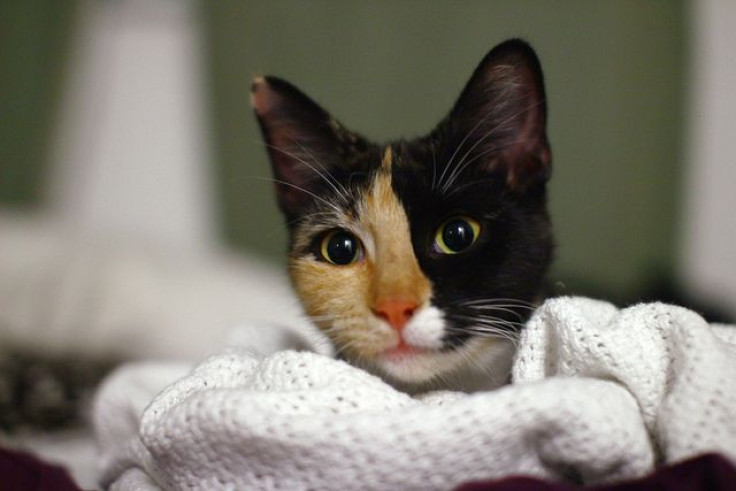That Cat Is Cute, But Its Poop Could Be Full Of Dangerous Parasites: How Big Is The Toxoplasma Gondii Threat?

Cat poop is known to carry the parasite Toxoplasma gondii, and while the dangers that this germ poses to pregnant women and the immunocompromised are well-documented, just how big is the issue for the general public and who else is at risk?
Two doctors from Johns Hopkins provide some answers in a new review article published today in the journal Trends in Parasitology.
The authors estimate that domestic and feral cats dump about 1.2 million tons of poop into the environment each year. Their main concern with all of this feces centers around T. gondii oocysts, which are the transport pods for the parasitic worms. A single cat can shed between three and 810 million oocysts per day.
"The accumulation of Toxoplasma gondii oocysts, found in cat feces, may be a much bigger problem than we realize because of their apparent long life and their association with some diseases," said co-author Dr. E. Fuller Torrey, who directs the Stanley Medical Research Institute at Johns Hopkins.
These oocysts have evolved to be extremely tough. They can survive in the Texas heat or in a bottle of sulfuric acid for over a year, meaning these parasitic pods can stick once they find a way into the soil of one's garden or into a child's sandbox.
Studies from Brazil and Japan have found a large abundance of the parasites in playgrounds around elementary schools and urban parks. Given that toddlers are known to put their hands and other objects in their mouths every two to three minutes, they could be at a higher risk for the germs.
But there's hope. Even though cat ownership has risen sharply in developed countries — 55 to 82 million in the U.S. between 1989 and 2006 — toxoplasmosis rates among adults have actually declined in recent years. (Questions still remain over rates in children, given kids are not regularly screened).
Another positive is that only one percent of cats are thought to be shedding parasites at any given time.
The authors, who also included Dr. Robert Yolken, have several recommendation on how to keep people safe.
First, gardeners who own outdoor cats should always wear gloves when working in their yards, as kitties enjoy burying their poop. It should also be "assumed that the play areas of children, especially sandboxes, are highly infectious unless they have been covered at all times when not in use or are located in a protected area not accessible to cats."
In addition, if you notice that your cat has caught a wild bird or mouse, a trip to the vet may be in order. Vets can screen for germs, and although there is no approved drugs for cats to eliminate the parasite, there are treatment options that can reduce the shedding oocysts during the most contagious stages — the first month after infection. Educating the public on the proper disposal of kitty litte, especially with infected cats, is another important intervention strategy.
If the spread of oocysts can be successfully controlled, then the prevalence of Toxoplasma gondii in humans could drop even further, which would ultimately improve public health.
Source: Torrey EF, Yolken RH. Toxoplasma oocysts as a public health problem. Trends in Parasitology. 2013.



























